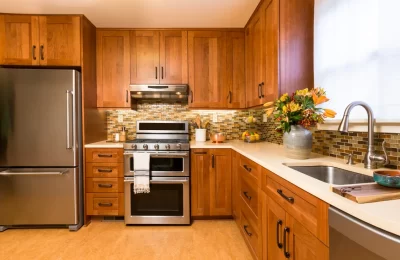
Your renovation or building decisions can make a truly huge difference, with regards to your environmental footprint: think of flooring – the choices you make will very literally imprint your values on your home, while also promoting sustainable practices.
Toxic chemicals are be released from traditional flooring materials backed with formaldehyde and particleboard. Think quickly, and you’ll realise that conventional flooring materials also contribute to rampant deforestation. The good news is that, with a little thought, it’s possible to find eco-friendly alternatives that drastically reduce these impacts – maybe domestic hardwood flooring or recycled rubber tiles, sourced in a way that keeps them out of landfills.
Recycled Materials
Conventional flooring choices lead to also negative consequences to the the environment. Carpeting releases volatile organic compounds that contribute to poor indoor ari quality. And hardwood takes a lot of energy and non renewable commodities to be made and manufactured. Choosing green flooring is the solution to reduce this negative impact on the environment.
Reclaimed wood is visually appealing, while also helping reduce the demand for new timber, and resilient floorings made from recycled materials help lessen plastic waste by keeping them out of landfills and thereby diverting them to other uses.
But do not forget that all green flooring is not created equally to be designated as such. To be green, products must have a net positive impact on the environment from extraction to production and disposal. With the Greenwash Free Filter, shoppers can use a tool to ratchet out sustainability claims to make a choice that either biodegrades naturally or uses low VOC adhesives, making truly green choice.
Biodegradable Materials
There are a wide variety of sustainable flooring options that we can choose from. Opting for materials lasting for as long as possible means fewer replacements and less refuse heading to the landfill, and cleaning and maintenance procedures also ensure that our sustainable flooring remains environmentally sound throughout its usage.
Renewable and recyclable materials – the kind you find used for flooring applications – typically require fewer raw materials and produce lower levels of carbon emissions during production. Materials such as wood that is certified by the Forest Stewardship Council (FSC) or Cradle to Cradle signify that the wood product and natural product have been harvested using best practices.
Another example of sustainable flooring is reclaimed hardwood, which utilises old timber that would otherwise be discarded to make attractive floors. Linoleum, too, is fashioned from recycled materials such as linseed oil combined with wood flour and cork dust to create hard-wearing yet attractive floors. Plant-based floors are carbon neutral as the starting raw materials are extracted directly from trees that not only absorb CO2 to build their own mass but produce oxygen at the same time.
Low-Emitting Materials
Floor materials play a huge role in the sustainability of your house. Often traditional types like non-renewable hardwoods and synthetic carpets leave behind a bad carbon footprint in their manufacturing process, such as oil-based deforestation and energy usage.
Other sustainable repeats include wood, cork and bamboo flooring, the creation of which has a vastly lower environmental impact compared to synthetic floors thanks to their naturally grown materials. This sustainability is also reflected in the longevity of these organic floorings, which far surpass standards for carbon footprint reduction and spending less on costly replacements.
Wood and cork floors are eco-friendly, since their production doesn’t seen greenhouse gases or other possibly life-threatening chemicals get released to the environment during the manufacturing process. This helps creating a safer indoor environment with less health risks. They requires little maintenance compared to more demanding cleaners Eco-friendly options for flooring exist for everybody who is into the idea of having a more modest environmental footprint – for example, recycled glass tiles or rubber.
Energy-Efficient Materials
This helps people to make their homes greener, contributing to environmental conservation.Homeowners can promote eco-friendly flooring as not only saving energy consumption and ellmissions but also providing natural insulating features that can save more energy in a long run.
The most popular green flooring options are cork, reclaimed wood and linoleum. Cork flooring is made of bark from the cork oak tree, which regenerates after harvest. This is an eco-friendly flooring option that has a long lifespan and is both durable and beautiful. As for reclaimed wood, using this kind of flooring is a great way to produce peachy-keen results while being eco-friendly. It decreases the demand for new wood, thus protecting forests. Linoleum is another biodegradable option that doesn’t have volatile organic compounds (VOCs) and comes in a variety of colours and patterns to match any interior.
Reclaimed wood uses old timbers for a refreshing visual kick, alongside helping to lessen demand for new timber. Recycled glass tiles are another option, as are rubber mats – just make sure to check for certifications on any materials you choose, and use handy tools such as the Greenwash Free Filter to assess the legitimacy of any sustainability claims made.










